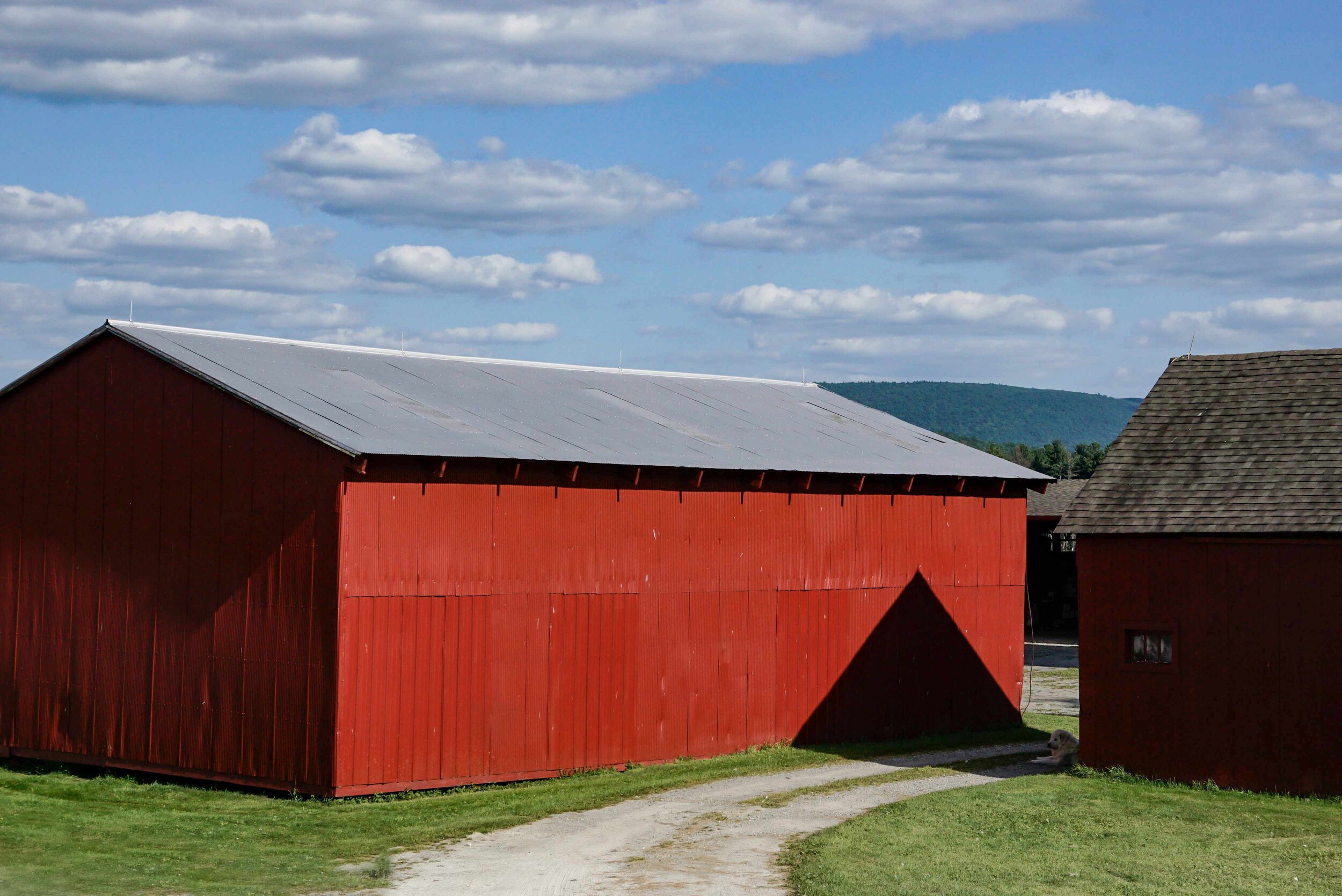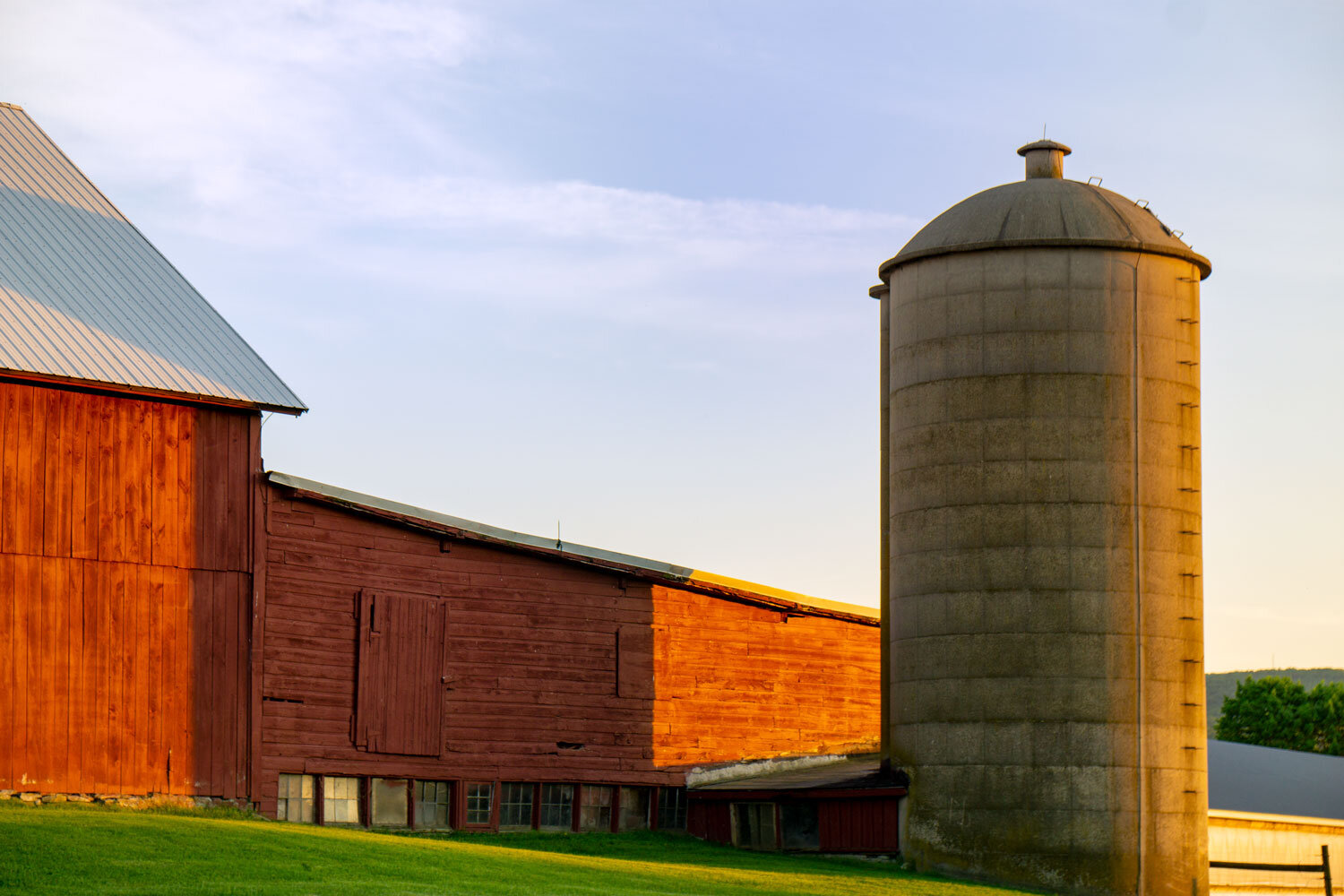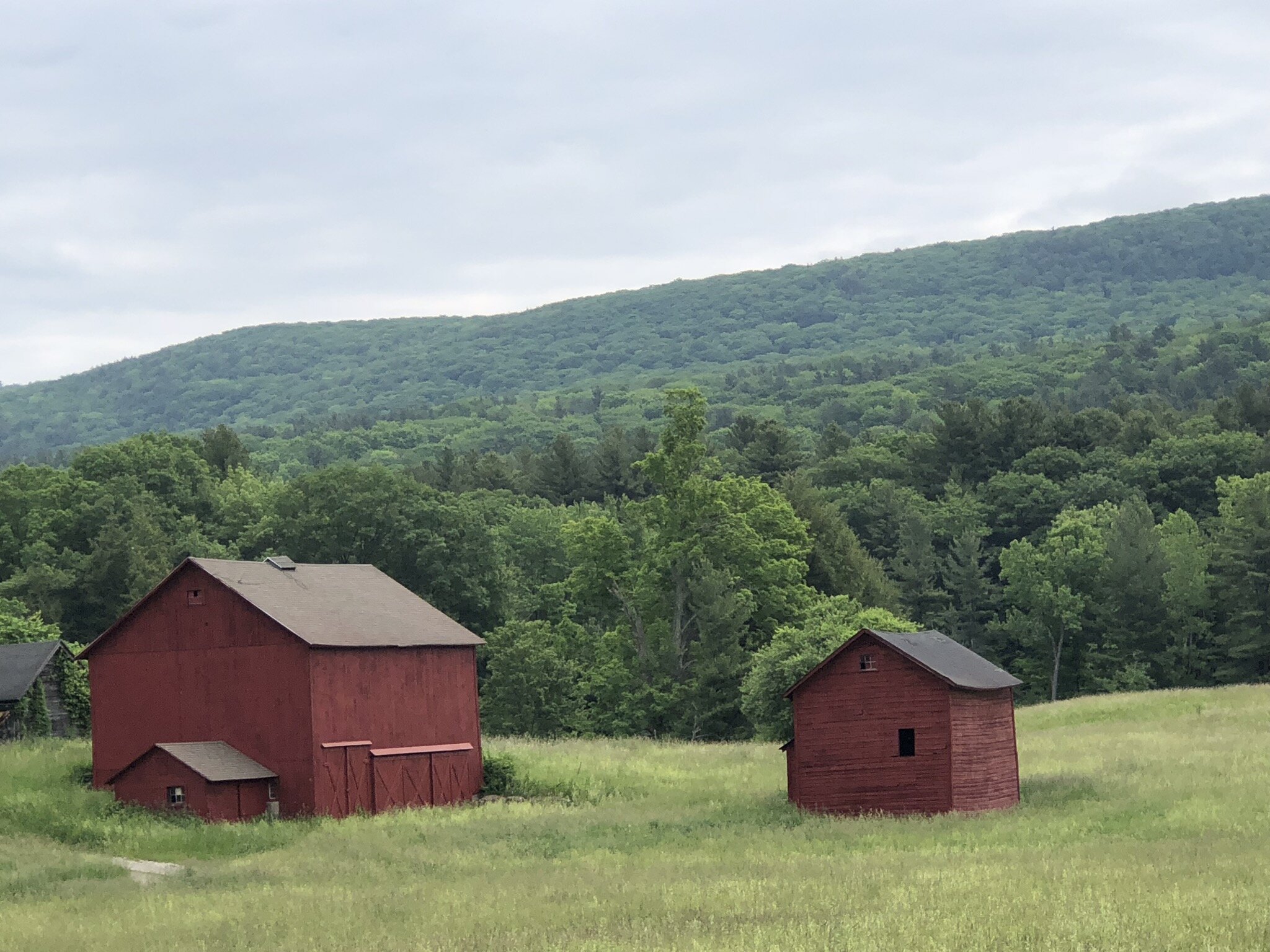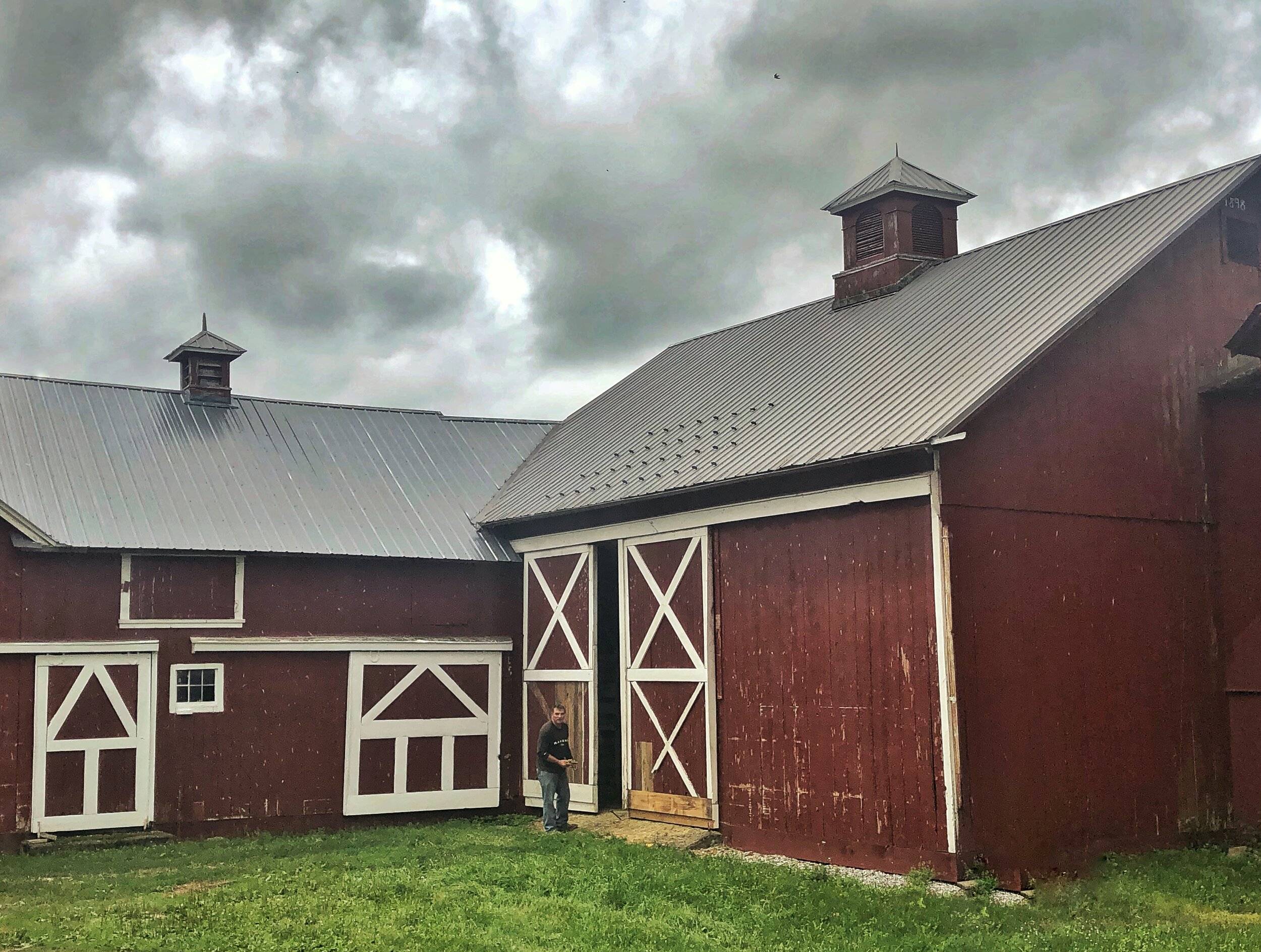Ever since I discovered the Berkshires in 1971, I’ve been mesmerized by old barns. Our 1789 house, Seekonk Farm, has two small ones. They now serve as garages, one with a ping pong table and the other with garden tools, ski gear, a croquet set, and loads of boxes with books, memorabilia, dishes, you name it. Many moons ago, one of the barns, located near the pasture, offered shelter to my two horses: Captain, a chestnut colored Saddlebred; and Morgan, well, a Morgan. Even decades later, when I enter that barn I might catch a whiff of their scent and fresh hay.
Today, the smaller, “salt box” style barn is surrounded by another love of mine, gardens. This one has stone paths, a birdbath, a bench and even an old, marble tombstone found on the property. Inscribed on it are the words: “Cling not to Earth” which is the name I chosen for that garden. Each spring, it comes to life, offering a new display of crocuses, trillium, blood root and later, allium, irises, and bleeding hearts.
Seekonk Farm barn and garden
But let’s get back to more “real” barns, often with silos for grain that feeds livestock. Of course, now we can join a CSA (Community Supported Agriculture) that provides its members, as well as clients at farmers’ markets, fresh and varied organic produce. In fact, the first CSA in the US, and perhaps the world, “Indian Line Farm”, was created by Robyn Van En in the Berkshires in 1986. It still exists today and is one of more than 8000 in the country.
Just above and below is one of my favorite visual sources for barns, Lila Berle’s farm, the largest sheep farm in Massachusetts. Be it on a perfectly sunny summer day, or a gray, stormy afternoon with a promise of rain, such lush red barns continue to stand out with their wooden clapboards and clean, geometric lines.




An exception to this style as well as color, however, is at the Hancock Shaker Village, listed on the National Register of Historic Places. It is known for its 1826, one of a kind circular barns, exquisitely built of stone and wood painted a distinctive mustard yellow. Its large, circular structure might remind one of the Guggenheim Museum designed by Frank Lloyd Wright. In the tradition of Shaker inventiveness, the barn had a very practical purpose: cows, lined up like spokes on a wheel, could feed more efficiently facing towards the center
Below is a “bright, golden haze on the meadow” (Oklahoma musical), taken at our local sheep farm in autumn.
Lila Berle Sheep Farm, Great barrington MA
Close to the sheep farm, and also down the road from me, is a cluster of beautiful emerald green barns. Here, I often see horses grazing as I drive, walk or bike by. The view of Tom Ball Mountain in the Alford valley is striking. Best of all, it was built just a few years after a large and handsome red barn burned down on its site by an arsonist in the 1980’s.
The color known as “barn red” was traditionally used as a paint beginning in the 19th century. Wikipedia, like any paint store provides a long list of red names. “Barn red”, though, was, according to Wikipedia, “formulated to reproduce the colors historically used on the American frontier, and made with milk.” Not the case today with latex paints, whose base originally came from rubber trees in the Amazon.
Not all barns are red though. Some might simply be a combination of stone and weathered wood.
Not all green barns are as identical in color as barn red. They can include many hues of green such as olive or even turquoise. All remind me of the vegetation upon which our life depends.








